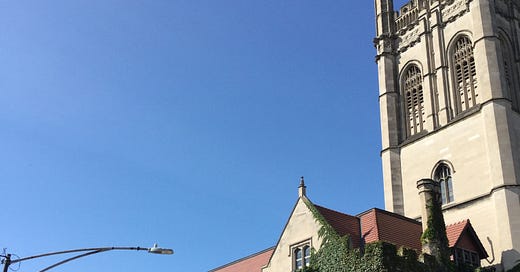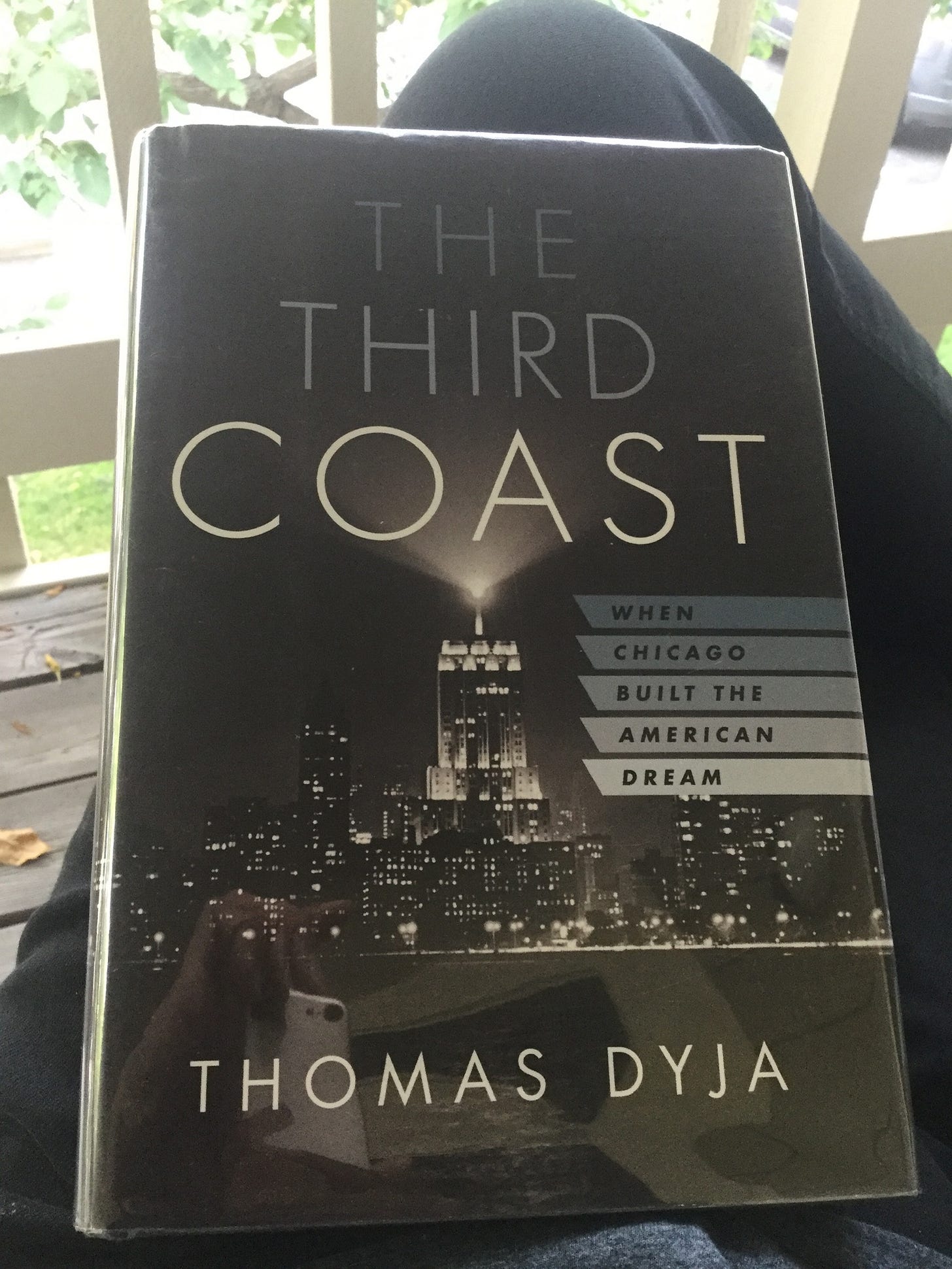During the mid to late nineties while living in Chicago, I never made my way over to Hyde Park, a prominent South Side neighborhood. However, on a 2021 visit to Chicago while the pandemic was still raging, I had the opportunity to spend two nights at an Airbnb in the area, a visit that left me with a positive impression of the community.
Home of the esteemed University of Chicago, a globally respected academic institution, this tight-knit community features stately houses along tree-lined streets. Intellectually, culturally, and architecturally rich in history, the area has been home to presidents, politicians, and religious leaders (including the Obamas), and it is renowned as one of the most integrated and middle-class parts of Chicago, a city still noted for its segregated neighborhoods.
Prior to my visit, I stumbled upon the book "Third Coast: When Chicago Built The American Dream" at The Hermitage bookshop in Denver. Written by Thomas Dyja, it offers an entrancing voyage through Chicago's vibrant history, chronicling its pivotal role in shaping the 20th century American dream. Through skillful storytelling, Dyja interweaves the city's cultural, political, and social evolution, providing readers with comprehensive insight into Chicago's unique contributions to the broader American narrative.
In the wake of my experience in Hyde Park, one particular paragraph in Chapter 4 of the book resonated with me deeply. Dyja writes:
“Though swallowed by the city in 1889 to accommodate both the World’s Fair and John D. Rockefeller’s plan to create the world’s greatest university, Hyde Park would always remain a place apart from the city at large, and Rockefeller’s school, the University of Chicago, would be regarded with as much suspicion as pride when anyone paid attention. The gothic spires and gray limestone, the quadrangle, and leaded glass windows all called to mind Oxford; the lawns and wide, satisfied homes, especially the ones built by Frank Lloyd Wright for Frederick Robbie, lounging along Woodlawn Avenue like a lazy summer day, exuded an East Coast sort of security — financial, social, and intellectual —- rarely found in the rest of the city.”
The book delves into Chicago's evolution from an industrial center to a thriving hub of culture, innovation, and aspiration. Dyja artfully captures the personalities and events that defined the city's growth. Included here is the Great Migration fueled blues, jazz, and literary movement that profoundly impacted the nation's artistic landscape.
Throughout the book’s pages, Dyja beautifully captures the essence of Chicago's development, linking it with the flat, prairie expanse next to Lake Michigan that birthed the most profound aspects of American Modernity. His portrayal intertwines the city's history, culture, and prominence through the lives of iconic figures like poet Gwendolyn Brooks, gospel singer Mahalia Jackson, writer Simone de Beauvoir, media personality Studs Turkel, and Mayor Richard J. Daley, among others.
An aspect of the book I found striking is its ability to bridge the past with the present. Dyja not only celebrates Chicago's achievements but also addresses its complexities and contradictions, shining a light on issues such as racial tensions, political corruption, and economic disparities. By presenting a nuanced historical perspective, "Third Coast" encourages readers to contemplate the intricate interplay between progress and challenges in contemporary urban settings.
The book's relevance to modern-day Chicago lies in its capacity to foster a deeper understanding of the city's roots and ongoing influence. Chicago enthusiasts can find inspiration in tales of resilience and ingenuity that have defined the city. Additionally, the book highlights the significance of acknowledging historical injustices while striving for inclusivity and equity.
During an era where cities nationwide are grappling with issues of identity, inequality, and urban development, "Third Coast" offers a historical lens that informs current challenges. The lessons gleaned from Chicago's historical successes and setbacks offer valuable insights for today's efforts to construct harmonious and vibrant communities.
In the end, the book stands as essential reading for individuals intrigued by the history, culture, and evolution of American cities. Dyja's eloquence in storytelling, coupled with his profound grasp of Chicago's journey, positions this book as an invaluable resource for both residents of the city and those eager to comprehend the broader dynamics of urban existence.
Dyja’s read has reinforced my appreciation for the treasure trove of books that offer historical context for the places we visit. If you're planning a trip to Chicago, I wholeheartedly recommend immersing yourself in this epic masterpiece.







What a great article, Diamond-Michael! I’m so glad to have come across your Substack and will definitely be back for more.
I used to have a sister-in-law in Chicago, but since she moved some years ago I rarely have occasion to visit this wonderful city, yet I so enjoyed reading about Michelle Obama’s experiences growing up there in the 60s and 70s in her book, Becoming.
I can hardly wait to learn what city you will explore next!